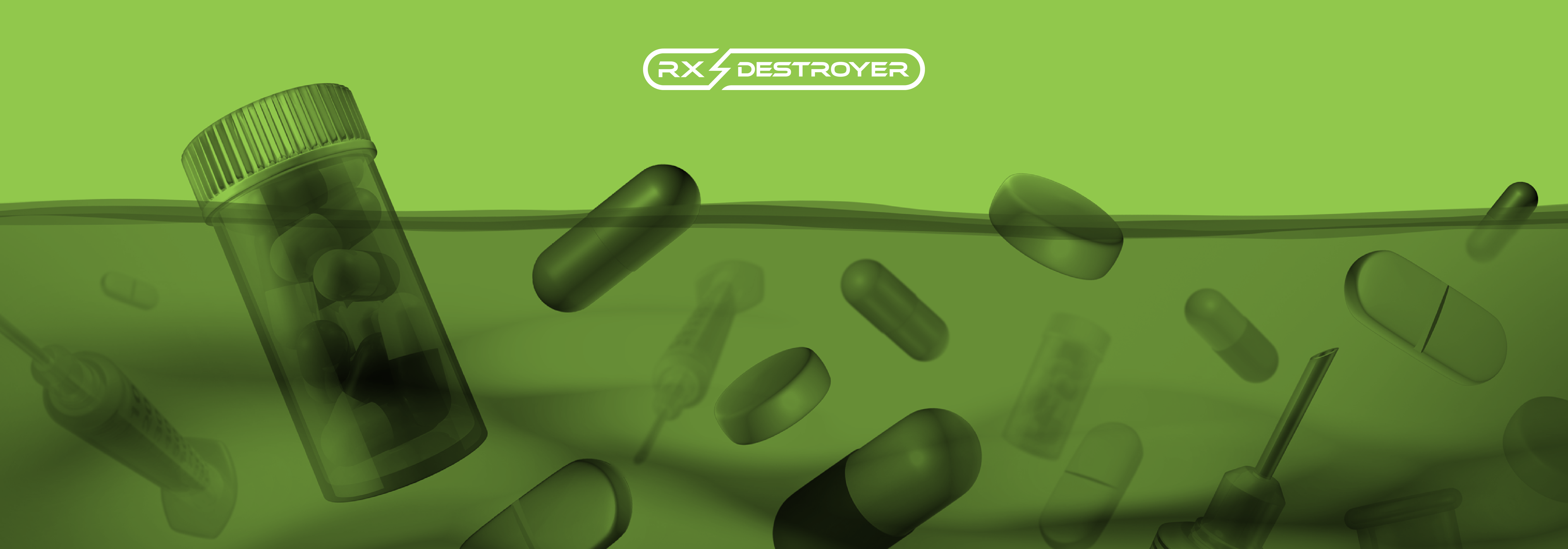Medication Disposal Compliance
February 5, 2024 | Pharmaceutical Waste Disposal

Long Term Effects of Improper Drug Disposal
Improper disposal of medications poses significant risks to human health and the environment. The ramifications of careless disposal methods are multifaceted, impacting both human health and the environment. Several key aspects highlight the severity of this problem:
- Environmental Contamination and our Water Sources: Flushing medications down the toilet introduces pharmaceutical compounds into the water supply. Wastewater treatment plants are not designed to filter out these substances effectively, leading to the contamination of rivers, lakes, and oceans.
- Soil Contamination: Discarding medications in the trash can result in the leaching of chemicals into the soil. This contamination can persist, affecting plant life and potentially entering the food chain.
- Impact on Wildlife: Pharmaceuticals that enter water bodies can harm aquatic ecosystems, affecting fish and other aquatic organisms. This contamination may disrupt reproductive systems, growth, and behavior of marine life.
- Unintended Poisoning: Keeping unused or expired medications in households increases the risk of unintentional poisonings, especially among children and pets who might accidentally ingest them. This can result in severe health complications or even fatalities.
In response to these concerns, regulatory bodies have instituted guidelines and regulations to govern the proper disposal of pharmaceuticals. Among these regulations is 21 CFR Part 1317, and a valuable tool in achieving compliance with these standards is the use of Rx Destroyer.
21 CFR Part 1317: A Framework for Responsible Medication Disposal
Title 21 of the Code of Federal Regulations (CFR) Part 1317 specifically addresses the disposal of controlled substances. Enforced by the Drug Enforcement Administration (DEA), this regulation delineates the procedures and requirements for the secure and responsible disposal of controlled substances by DEA registrants (pharmacies, hospitals, etc.) Adhering to 21 CFR Part 1317 ensures that controlled substances are disposed of securely, mitigating the risk of diversion and environmental harm.
No Flush Rule
The Environmental Protection Agency (EPA) also introduced a significant ruling, commonly referred to as the “no flush” rule, outlined in 40 CFR (Code of Federal Regulations) under Title 40, Chapter I, Subchapter I, Part 266. This regulation addresses specific guidelines related to waste disposal and wastewater management. The “no flush” rule is designed to restrict certain materials from being flushed or disposed of through wastewater systems. By implementing this regulation, the EPA aims to enhance environmental protection by preventing the inappropriate disposal of substances that could adversely impact water quality and aquatic ecosystems. For detailed information on the specifics of the ruling, interested parties can refer to the provided link [https://www.ecfr.gov/current/title-40/chapter-I/subchapter-I/part-266#266.500]
Efficiency and Convenience with Rx Destroyer
Rx Destroyer offers a straightforward and efficient method for the disposal of various medications, including pills, capsules, liquids, and patches. The system is user-friendly, easily integrated into healthcare facilities, pharmacies, and households. Rx Destroyer utilizes a method of disposal called checmical digestion. Chemical digestion is a DEA approved method of disposal of disposal to ensure compliance with disposal regulations.
Rx Destroyer products ensure that medications are non-retrievable contributing to the fight against drug abuse and illegal prescription medication distribution. Rx Destroyer’s versatility extends to a wide range of medications, from over-the-counter drugs to controlled substances. This adaptability makes it a comprehensive solution suitable for various setting, such as healthcare, veterinarian, public health, ands at home.

